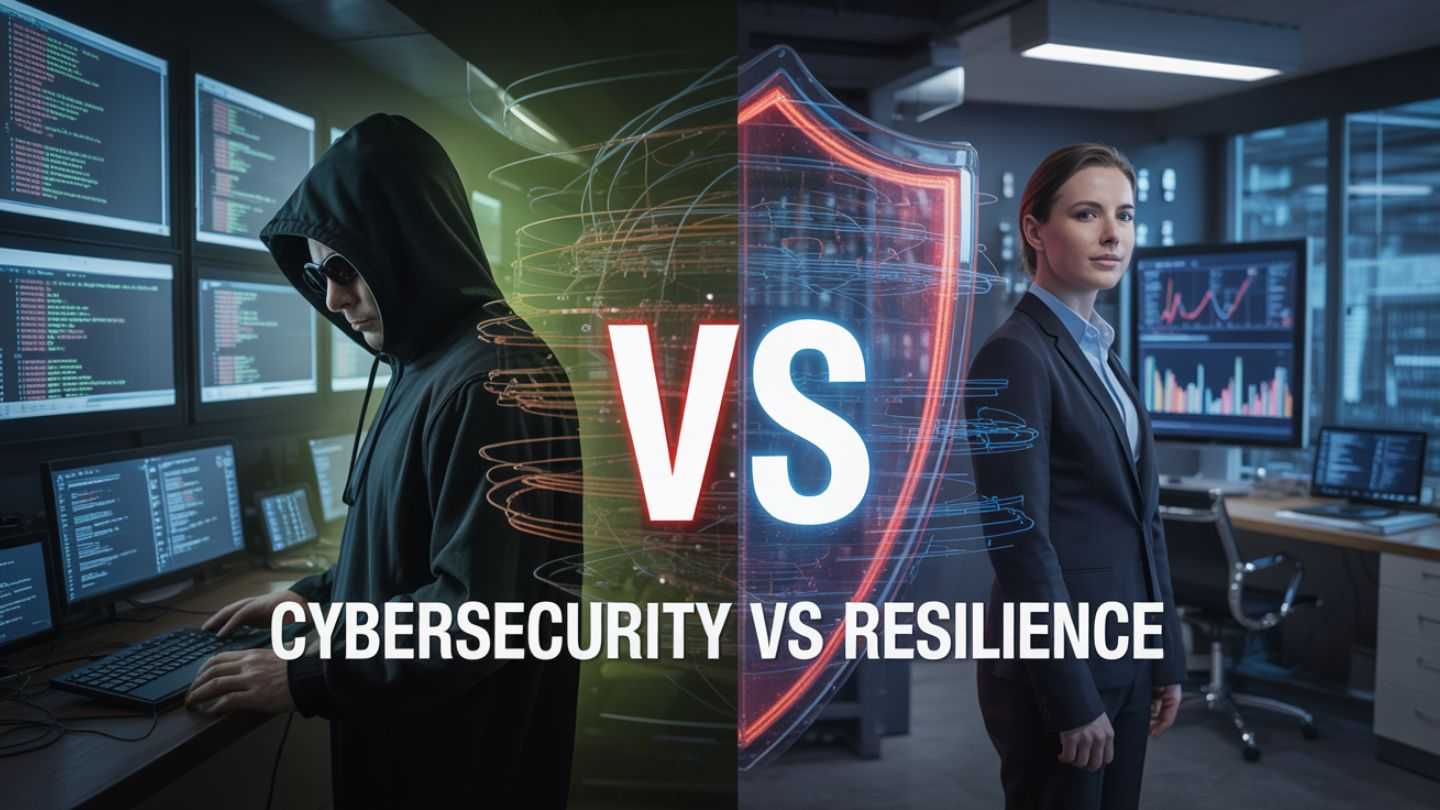Cybersecurity and cyber resilience are both essential for protecting your digital world, but they’re not the same. Cybersecurity is all about stopping attacks before they happen, while cyber resilience focuses on bouncing back quickly and keeping things running smoothly if an attack does occur.
When comparing “cybersecurity vs. cyber resilience,” this post will break down their differences and explain why combining the two is key for full protection against cyber threats.
Key Takeaways
- Cybersecurity aims to prevent attacks, while cyber resilience is about recovering and keeping things running after an attack.
- To truly protect your organization, you need both preventive cybersecurity measures and smart resilience strategies.
- A well-rounded approach strengthens your defenses, builds customer trust, and ensures you meet compliance requirements.
What Is Cybersecurity?
Cybersecurity is all about protecting digital assets and keeping bad actors out. Think of it like building a fortress around sensitive data and systems. It uses tech tools and best practices to stop unauthorized access, data breaches, and other threats.
Here are some key parts of cybersecurity:
- User authentication – Making sure people are who they say they are.
- Identity access management – Controlling who can access what.
- Data confidentiality – Keeping data private and secure.
- Data loss prevention – Stopping information from being stolen or lost.
These are especially vital in cloud computing, where so much of today’s work happens.
Organizations use a mix of tactics to fortify their defenses:
- Antivirus software
- Multi-factor authentication
- System updates
- Technical safeguards
By layering these efforts, they create a strong wall of protection to secure sensitive information. Cybersecurity is foundational for safeguarding digital assets.
What Is Cyber Resilience?
Cyber resilience is like a safety net. It’s about preparing for the worst and making sure your organization can recover quickly if something does go wrong. Unlike cybersecurity, which focuses on prevention, cyber resilience prioritizes recovery and adaptability.
A resilient organization can minimize damage from digital threats and get back to business quickly. This requires big-picture thinking. It’s not just about tech; it’s about preparation and planning:
- Regular data backups
- Disaster recovery plans (DRPs)
- Business continuity strategies (BCPs)
All of these helps reduce damage and speed up recovery after an incident. The goal? To keep operations steady, even when dealing with disruptions. Having strong cyber resilience also means learning from past incidents and staying adaptable to new challenges.
Cybersecurity vs. Cyber Resilience: What Sets Them Apart?

While both are crucial, cybersecurity and cyber resilience play different roles:
- Cybersecurity is focused on stopping attacks before they happen, using defenses like firewalls, antivirus software, and access controls.
- Cyber resilience is all about recovery. It ensures your business can keep running smoothly and bounce back quickly after an attack.
Think of it this way: Cybersecurity is your shield, and cyber resilience is your plan B. Together, they create a powerful strategy to protect against threats and ensure quick recovery when needed.
How Cybersecurity and Cyber Resilience Work Together
Combining preventive measures with resilience strategies is the ultimate way to handle cyber threats. When an attack happens, resilience ensures your business can keep running while damage is controlled, and systems are restored. Cybersecurity, on the other hand, works to stop these incidents from happening in the first place.
Blending these two approaches requires solid planning. It involves:
- Preventing cyber attacks
- Having a recovery plan for when they do happen
This approach is particularly helpful when dealing with strict regulations and data protection rules. Proactive monitoring plays a big role here, not only in detecting threats but also in strengthening overall resilience.
By bringing cybersecurity and resilience together, organizations can keep their operations running, meet regulatory requirements, and maintain customer confidence.
How to Build a Cyber Resilience Strategy
To craft a strong cyber resilience strategy, your organization needs to prepare for threats, handle incidents effectively, and recover quickly. Here’s what that looks like:
- Data backups: Store copies of your data to avoid losing it during an attack.
- Incident response plans: Create a detailed plan for different types of breaches, including how you’ll communicate during a crisis.
- Business continuity plans: These ensure your essential functions can keep running, no matter what happens.
- Employee training: Teach your team how to recognize threats and react appropriately.
Regularly assessing your vulnerabilities is key, too. This helps you identify weak spots and strengthen them before they’re exploited.
Success starts at the top. When leadership supports a culture of cybersecurity awareness, employees are more likely to stay vigilant and follow best practices.
Why a Holistic Approach Matters
By combining cybersecurity and resilience, you’re setting yourself up for smoother operations, even during an attack. This means less downtime, which strengthens customer trust and keeps things running.
A well-rounded approach also helps you stay compliant with regulations, reducing the risk of fines or other penalties. Plus, being able to keep operations going during a crisis boosts your reputation in the marketplace.
Building a Cyber Resilience Program

Here are the key steps for creating a strong resilience program:
- Simulate incidents: Test your plans by running realistic drills. This preps your team for real-world crises.
- Backup data: Make sure regular backups are part of your routine to protect against ransomware and other threats.
- Educate employees: Increase awareness and provide training so staff can spot dangers and follow best practices.
- Bridge prevention and recovery: Connect your cybersecurity measures with resilient recovery plans to cover both sides of the equation.
Prevention Meets Recovery
To effectively combat the growing threat landscape, organizations must prioritize both cybersecurity and cyber resilience. While cybersecurity provides the layers of defense needed to guard digital assets, cyber resilience equips businesses with the agility to recover and maintain operations seamlessly when challenges arise. Together, these approaches form a comprehensive strategy, ensuring robust protection and operational continuity.
At IntegriCom, we deliver tailored managed IT solutions and advanced support for businesses seeking cyber security services in Atlanta. Our experts integrate cutting-edge technologies with strategic planning to safeguard your operations from potential threats and ensure a rapid recovery when needed. Trust us to help you build a strong, resilient foundation that keeps your business secure and operational in an evolving digital world.
Frequently Asked Questions
What’s the main goal of cybersecurity?
To stop cyber-attacks by protecting digital assets and ensuring sensitive information stays safe.
How is cyber resilience different from cybersecurity?
Resilience focuses on bouncing back and minimizing disruption after an attack, while cybersecurity works to prevent attacks entirely.
Why should businesses combine cybersecurity and resilience?
A combined approach reduces downtime, builds trust, meets regulatory requirements and protects your reputation.
What are the essential parts of a cyber resilience program?
Regular backups, a clear incident response plan, continuous staff training, and routine risk assessments are critical for effective resilience.


